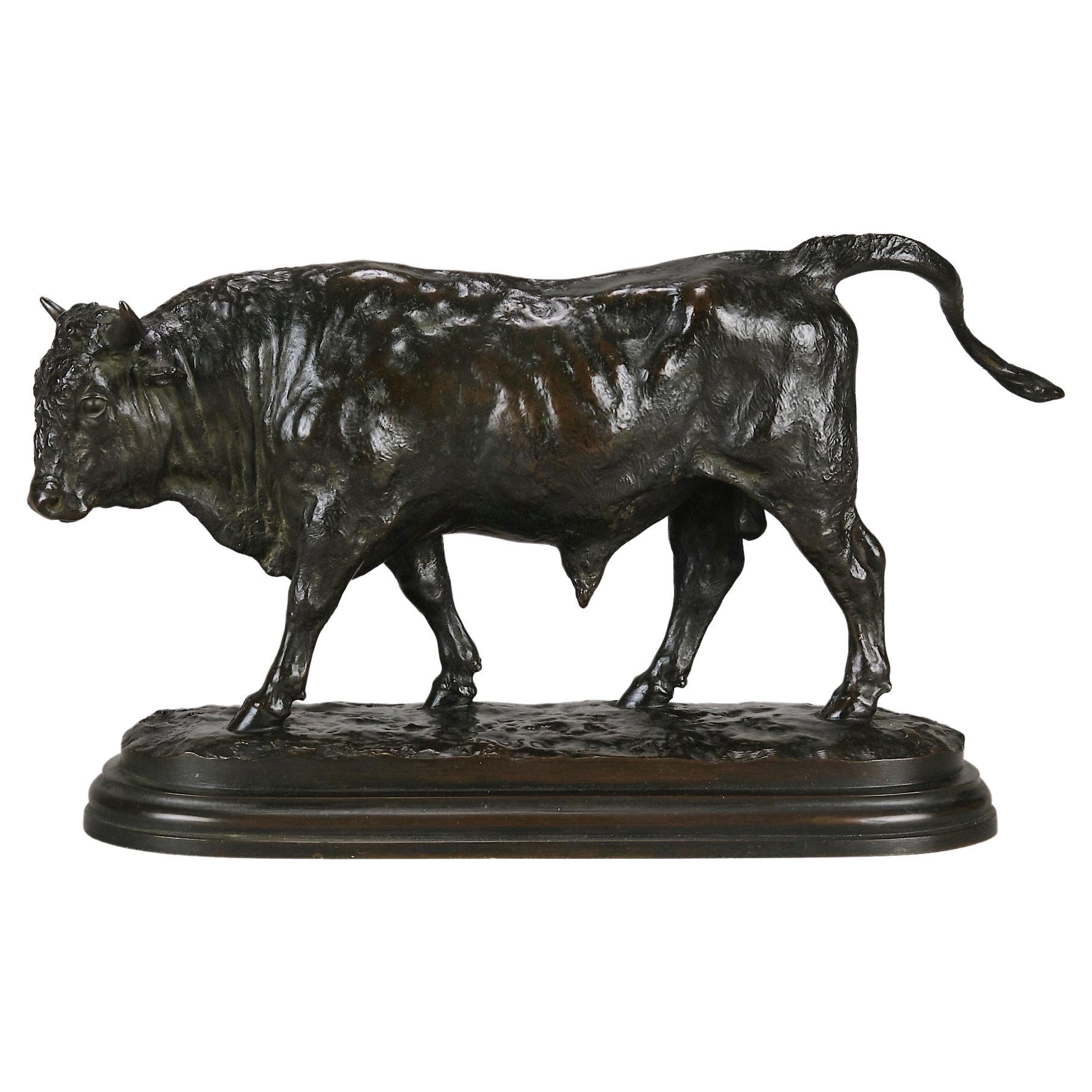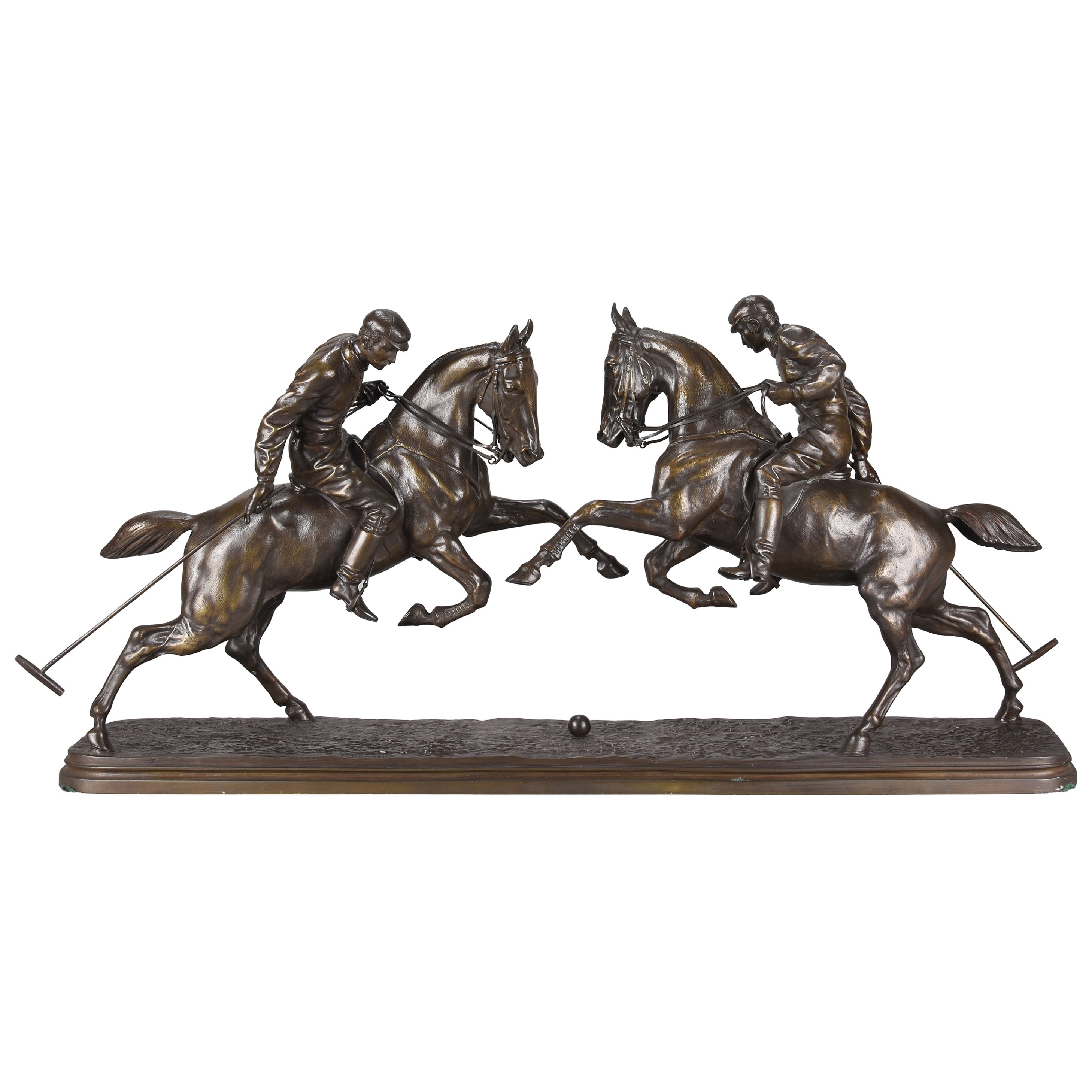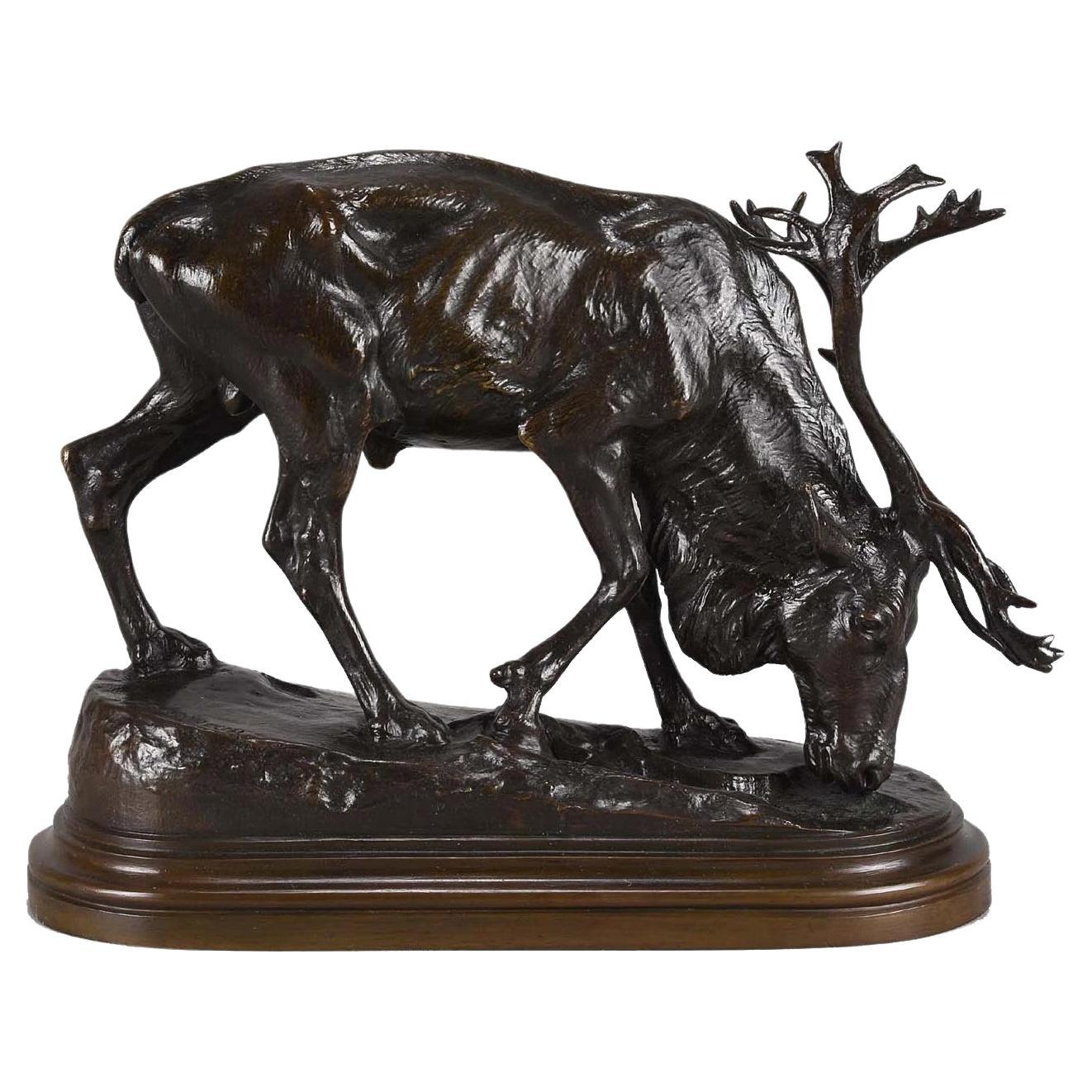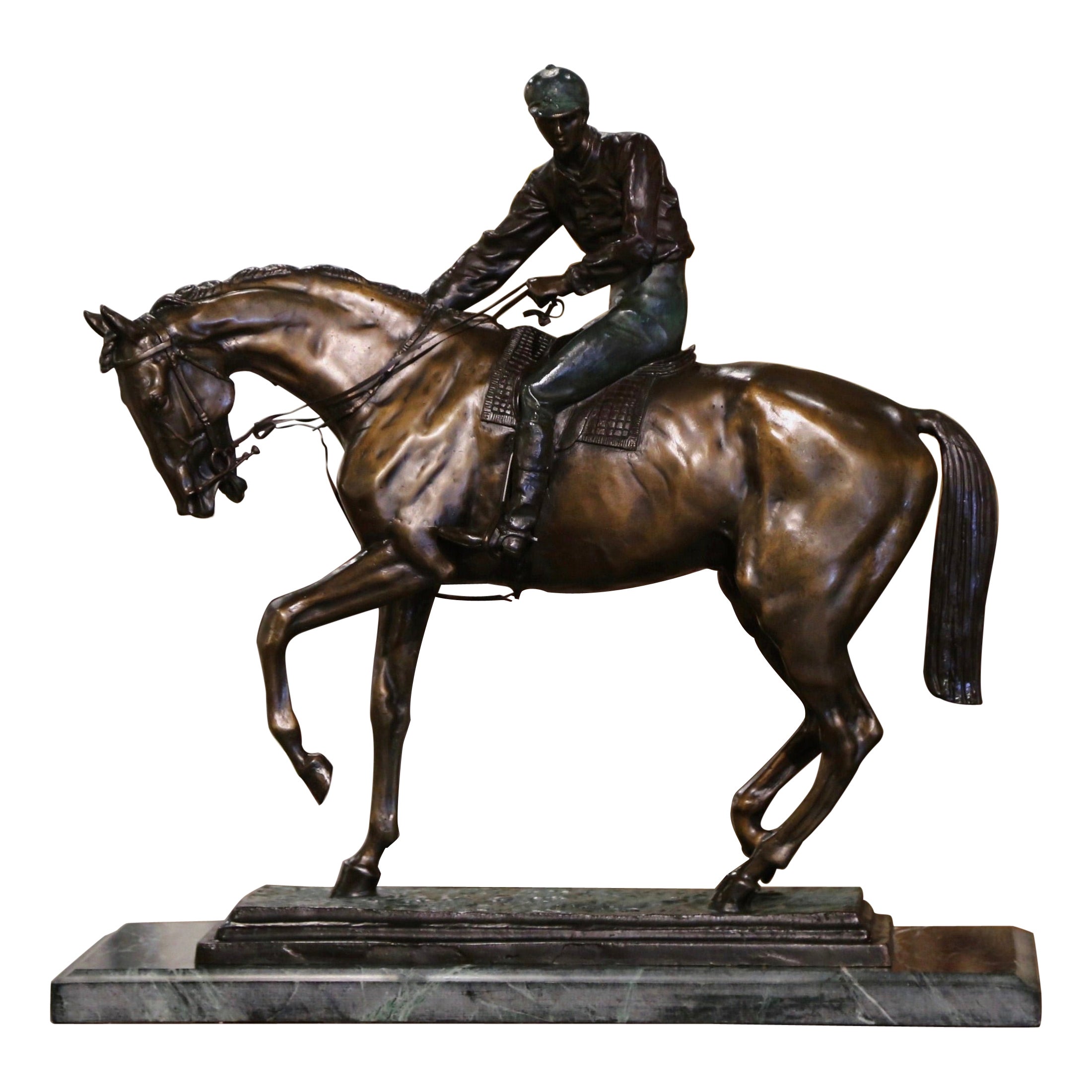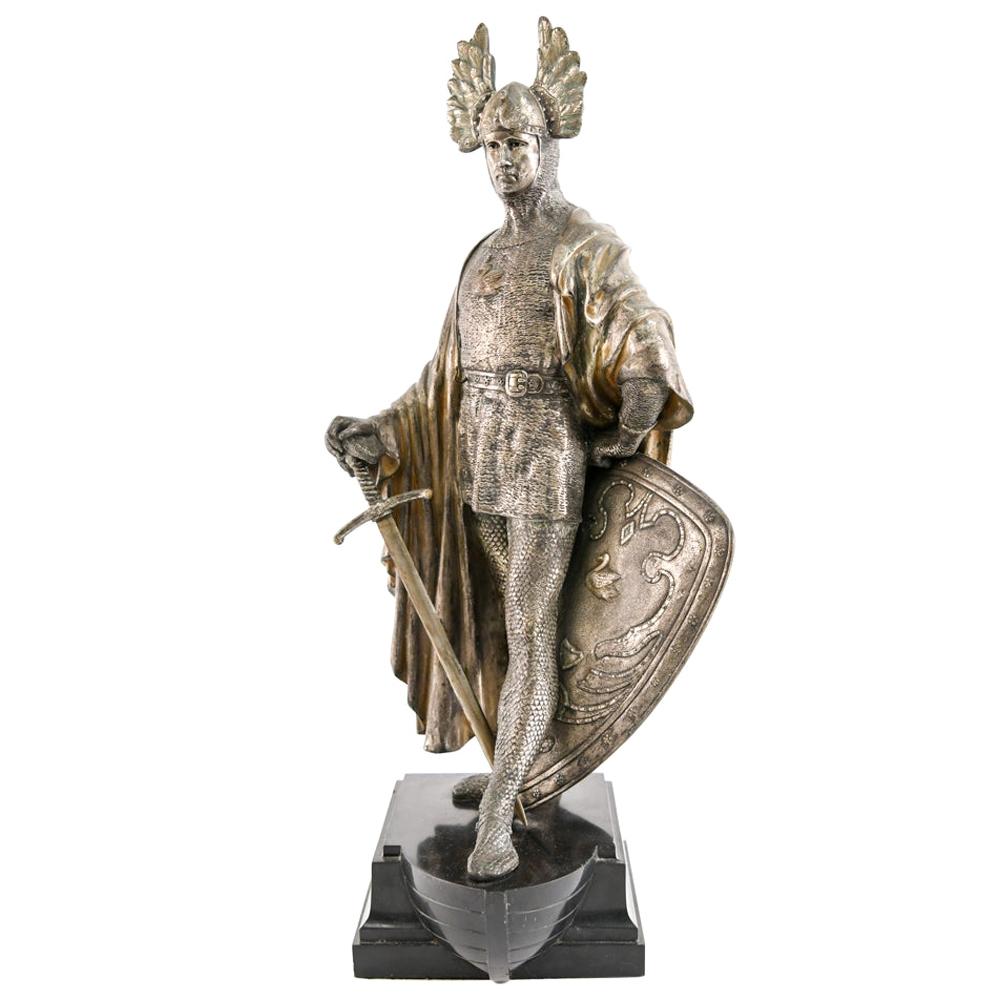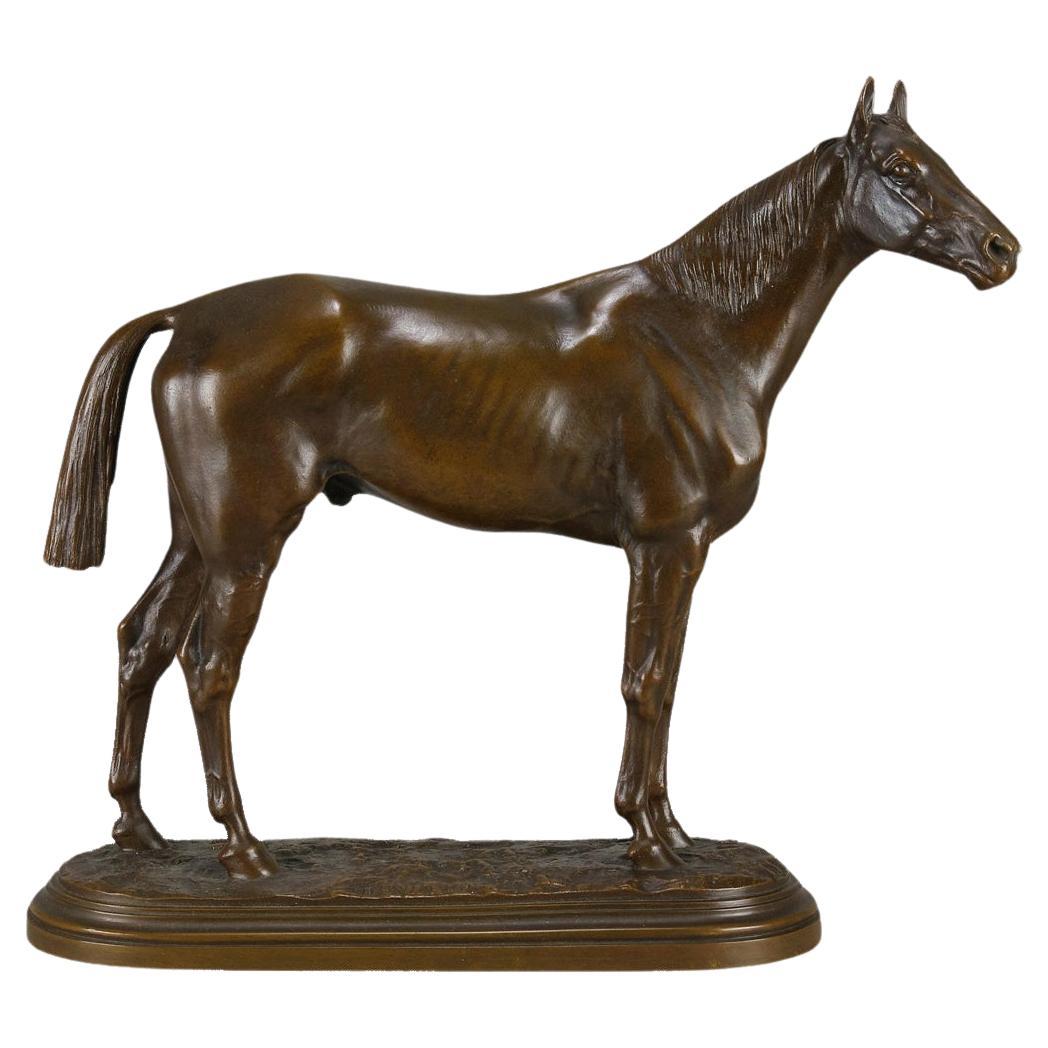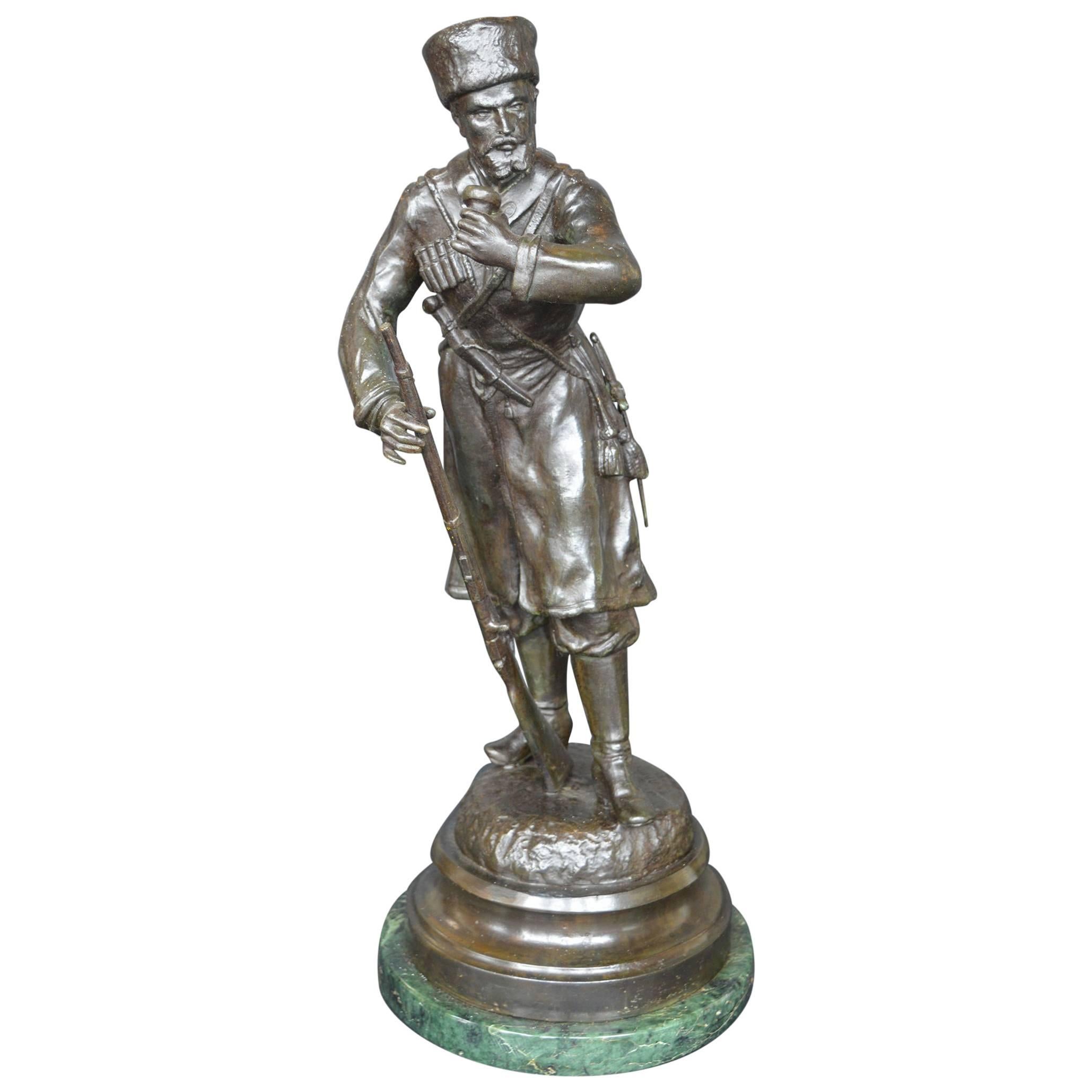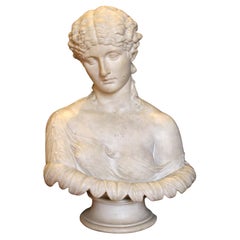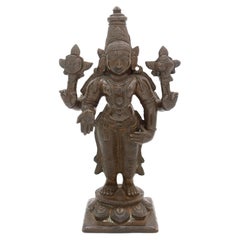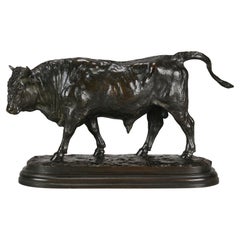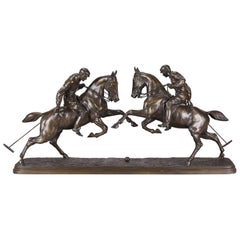
19th Century Bronze Sculpture "Bélier Couché" by Rosa Bonheur
View Similar Items
Want more images or videos?
Request additional images or videos from the seller
1 of 6
19th Century Bronze Sculpture "Bélier Couché" by Rosa Bonheur
About the Item
- Dimensions:Height: 3.38 in (8.59 cm)Width: 4.63 in (11.77 cm)Depth: 8.75 in (22.23 cm)
- Materials and Techniques:
- Place of Origin:
- Period:
- Date of Manufacture:19th Century
- Condition:Wear consistent with age and use.
- Seller Location:Chapel Hill, NC
- Reference Number:Seller: WBR-262z1stDibs: LU6458230136652
About the Seller
4.9
Platinum Seller
These expertly vetted sellers are 1stDibs' most experienced sellers and are rated highest by our customers.
Established in 1930
1stDibs seller since 2022
138 sales on 1stDibs
Typical response time: 1 hour
More From This SellerView All
- Late 19th Century Bronze Altar of ShivaLocated in Chapel Hill, NCHindu altar in bronze, probably late 19th century, of Shiva, the God of Destruction (he destroys evil, ignorance & death) in the foreground seated on a pea...Category
Antique Late 19th Century Indian Victorian Figurative Sculptures
MaterialsBronze
- Late 19th Century Plaster Faux Marble BustBy D. Brucciani and CompanyLocated in Chapel Hill, NCPlaster faux marble bust of Antonia, made by D. Brucciani & Co. London, late 19th century. A woman emerging from a calyx of leaf came to represent the nymph Clytie. A copy of the mar...Category
Antique Late 19th Century English Classical Roman Busts
MaterialsPlaster
- Late 19th Century Small Bronze Vishnu StatueLocated in Chapel Hill, NCLate 19th century small bronze statue of Vishnu, chiseled with great detail on a fine casting, lost wax process. 2 1/2" x 1 3/8" x 4...Category
Antique Late 19th Century Indian Sculptures and Carvings
MaterialsBronze
$236 Sale Price20% Off - Mid-19th Century Meiji Period Bronze Hand MirrorLocated in Chapel Hill, NCMid-19th century Meiji period bronze hand mirror. Floral decoration with artist inscription & signature amongst the water lillies. Measures: 9 3/...Category
Antique Mid-19th Century Japanese Meiji Metalwork
MaterialsBronze
$236 Sale Price20% Off - 19th Century Small Serene Bronze Hindu God StatueLocated in Chapel Hill, NCSmall bronze serene standing figure, a Hindu God, lost wax casting. 19th Century. 1 1/2" x 1" x 3 3/4" H.Category
Antique 19th Century Indian Sculptures and Carvings
MaterialsBronze
$180 Sale Price20% Off - Late 19th Century Japanese Bronze & Champlevé Vase LampLocated in Chapel Hill, NCLate 19th century Japanese bronze & champlevé vase lamp. Archaic design. The vase made into a lamp some time in the 20th century. Nice champlevé work with peonies & tendrils. Ring ha...Category
Antique Late 19th Century Japanese Archaistic Table Lamps
MaterialsBronze
You May Also Like
- 19th Century Animalier French Bronze Entitled "Taureau Debout" by Rosa BonheurBy Rosa BonheurLocated in London, GB"Taureau Debout" by Rosa Bonheur. An excellent late 19th Century French animalier bronze study of a standing bull with fine hand chased surface that accentuates the muscle definition of the subject, signed Rosa B. ADDITIONAL INFORMATION Measures: Width: 32 cm Height: 18 cm Depth: 11cm Condition: Excellent Original Condition Circa: 1870 Materials: Bronze Book reference: Animals in Bronze by Christopher Payne Page no. 174 DESCRIPTION Bonheur, Rosa (1822-1899) The most popular artist of nineteenth-century France, Rosa Bonheur was also one of the first renowned painters of animals and the first woman awarded the Grand Cross by the French Legion of Honor. A professional artist with a successful career, Bonheur lived in two consecutive committed relationships with women. Born on March 16, 1822 in Bordeaux, Marie Rosalie Bonheur was the oldest of the four children of Raimond Oscar Bonheur (1796-1849) and Sophie Marquis. Bonheur's father was an art teacher who came from a poor family, while her mother, a musician, had descended from a middle-class family and had been her husband's art student. Bonheur's father, who taught drawing and landscape painting, was an ardent member of the utopian Saint Simeon society. The group held idealistic beliefs about the reform of work, property, marriage, and the role of women in society. Most importantly, for the artist's future, the Saint Simeons questioned traditional gender norms and firmly believed in the equality of women. While teaching artistic techniques to his oldest daughter, Raimond Bonheur also encouraged her independence and taught her to consider art as a career. In 1828 Raimond Bonheur joined the Saint Simeons at their retreat outside Paris. Sophie and the children joined him in Paris the following year. Four years later, however, Raimond abandoned his family to live in isolation with his fellow Saint Simeons. Sophie Bonheur died in 1833 at the age of thirty-six. Rosa was only eleven years old when her mother died, but she was aware of the heavy price her mother paid for married life with a man who was more dedicated to his own ideals than to meeting his family's needs. Rosa also saw that her mother's marriage led to poverty and her death from exhaustion. After her mother's death, Bonheur was taken in by the Micas family who resided nearby. Mme Micas and Bonheur's mother had been friends. When Mme Bonheur died, the Micas family paid Raimond Bonheur's debts and cared for Rosa. Their daughther, Nathalie, who would later become an amateur inventor and unschooled veterinarian, and Rosa became enamored with each other. When Rosa Bonheur began her career as a professional artist, she had already been trained by her father who had allowed her to study in all male classes. Rosa also learned by sketching masterworks at the Louvre from the age of fourteen, and later, by studying with Léon Cogniet. From the very beginning, Bonheur's favorite subject was animals. She learned their anatomy completely by dissecting them in local slaughterhouses. She also visited the horse market two times a week. Study of animals by direct observation led to the formation of the realist style in which Bonheur worked. It was for such work that Bonheur obtained written permission from the French government to wear men's slacks. Her working attire also consisted of a loose smock and heavy boots that protected her feet from the dangerous environment in which she painted. The style of dress that the artist adopted for work and home may well have been influenced by her father's attire, which was based on St. Simeonian clothing experiments. Bonheur also cropped her hair, perhaps to facilitate her work. She did, however, always wear dresses for social occasions because she knew that appropriate dress would further her career. Bonheur earned a successful living as a painter of animals. She exhibited at the annual Paris Salon regularly from the age of nineteen in 1841 through 1853, when she was thirty-one. She won the salon's gold medal at the age of twenty-six in 1848 and was commissioned by the French government to paint Plowing on the Nivernais in 1849. In the same year Bonheur and her sister Juliette became directors of l'École gratuite de dessin pour les jeunes filles, a post their father had once held. Bonheur completed her most renowned work, The Horse Fair, in 1855. The successful representation of percherons (a breed native to Normandy) was purchased by Ernest Gambart, a London art dealer whose gallery specialized in work by French artists. He exhibited The Horse Fair in London where Bonheur visited with Nathalie. Queen Victoria requested a private viewing of the painting at Windsor Castle. It would later be purchased in 1887 by Cornelius Vanderbilt and donated to the new Metropolitan Museum of Art in New York City. Bonheur's trip to England allowed her to meet Charles Eastlake, then President of the Royal Academy, John Ruskin, the English writer and critic, and Edwin Landseer, the British animalier. She also toured the English and Scottish countrysides and executed some paintings based on her observations of new breeds of animals found there. Gambart made engravings of Bonheur's work, including The Horse Fair, and sold them in England, Europe, and the United States. Bonheur became one of the most renowned painters of the time. Little girls, such as Anna Klumpke in the United States, even had dolls in her likeness, much as American girls played with Shirley Temple dolls...Category
Antique 19th Century French Art Nouveau Animal Sculptures
MaterialsBronze
- 19th Century Bronze Sculpture Entitled "Polo Players" by Isidore BonheurBy Isidore Jules BonheurLocated in London, GBA fabulous late 19th Century animalier bronze group of two opposing polo players on their eager ponies going for the ball with excellent hand chased surface detail and good colour, raised on a stepped naturalistic base and signed I Bonheur Additional Information Height: 32 cm Width: 67 cm Condition: Excellent Original Condition Circa: 1880 Materials: Bronze About Isidore Bonheur Isidore Bonheur, born in Bordeaux May 15 1827. Isidore was the third child of Christine Dorotheé Sophie Marquis (1797–1833), a musician, and Oscar-Raymond Bonheur (1796–1849) (a landscape and portrait painter and an early adherent of Saint-Simonianism, a Christian-socialist sect that promoted the education of women alongside men). Isidore was the brother of Auguste Bonheur...Category
Antique 19th Century French Art Nouveau Animal Sculptures
MaterialsBronze
- 19th Century Animalier Bronze Sculpture Entitled "Reindeer" by Isidore BonheurBy Isidore Jules BonheurLocated in London, GBExcellent late 19th century animalier bronze study of a feeding reindeer with rich brown colour and very fine hand chased and etched surface detail, raised on a stepped naturalistic base, stamped with Peyrol Foundry mark and signed Isidore Bonheur Additional information Height: 16 cm Width: 22 cm Condition: Excellent Original Condition Foundry: Peyrol circa: 1880 Materials: Bronze SKU: 8211 DESCRIPTION Isidore Bonheur Isidore Bonheur, born in Bordeaux May 15 1827. Isidore was the third child of Christine Dorotheé Sophie Marquis (1797–1833), a musician, and Oscar-Raymond Bonheur (1796–1849) (a landscape and portrait painter and an early adherent of Saint-Simonianism, a Christian-socialist sect that promoted the education of women alongside men). Isidore was the brother of Auguste Bonheur...Category
Antique Late 19th Century French Art Nouveau Animal Sculptures
MaterialsBronze
- Late 19th Century French Bronze Sculpture "Le Grand Jockey" Signed I. BonheurBy Isidore Jules BonheurLocated in Dallas, TXDecorate an office or study with this large antique bronze sculpture. Created in France circa 1880, and signed by French sculptor Isidore Bonheur, the sculpture is set on a green mar...Category
Antique Late 19th Century French Animal Sculptures
MaterialsMarble, Bronze
- French Bronze Figure of a Bull, by Rosa BonheurLocated in New York, NYInscribed "Rosa B" and stamped with the "Peyrol" foundry on the base.Category
Antique 1860s Animal Sculptures
MaterialsBronze
- 19th Century Bronze Wolf SculptureLocated in London, GBA mid-19th century bronze sculpture of a wolf, set upon a green marble plinth.Category
Antique 19th Century Italian Grand Tour Animal Sculptures
MaterialsMarble, Bronze
